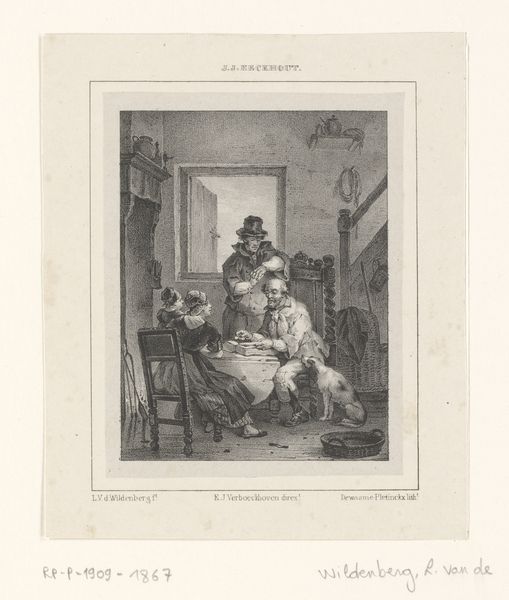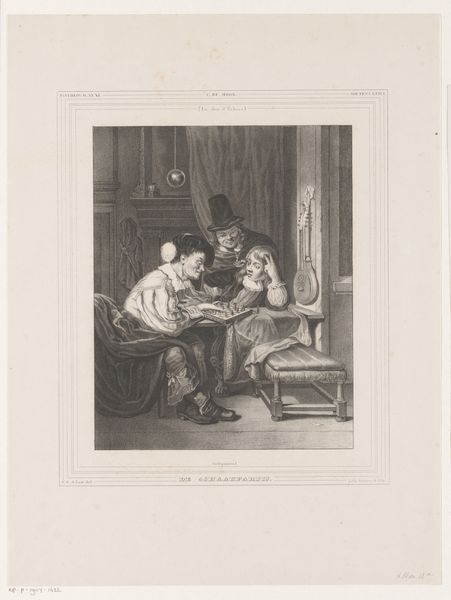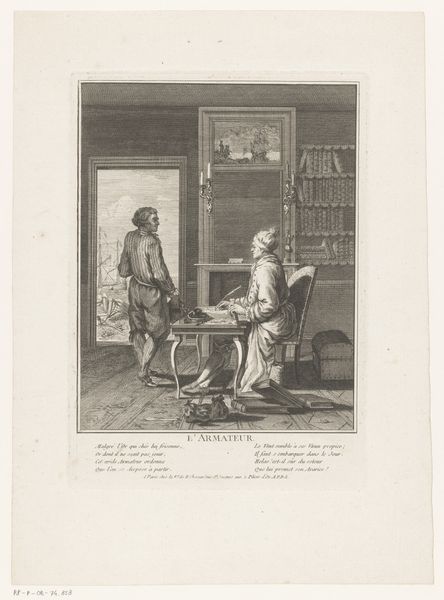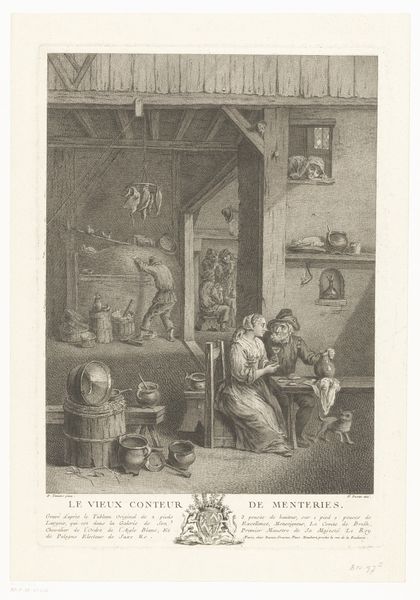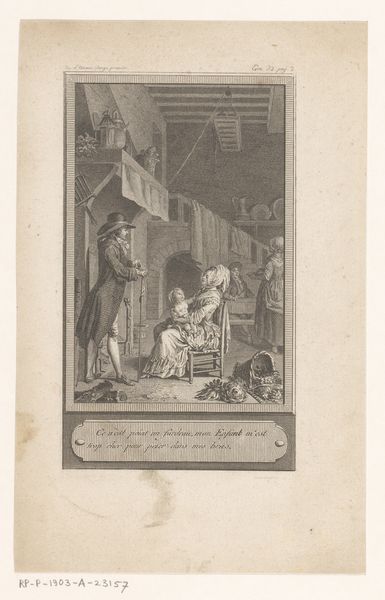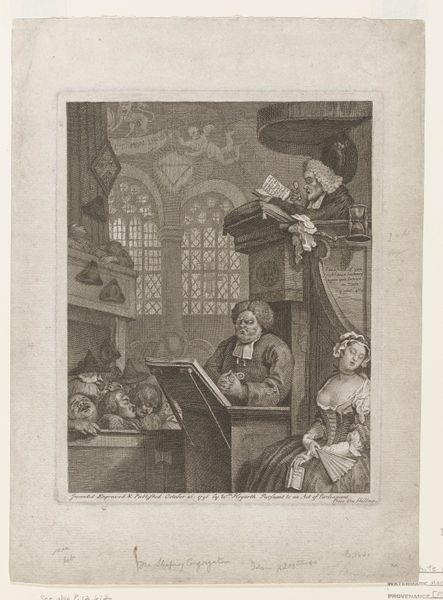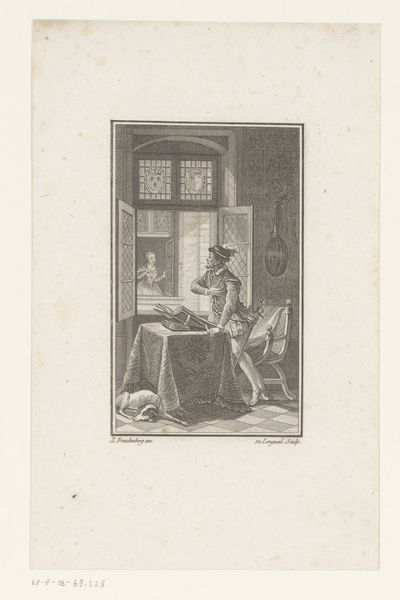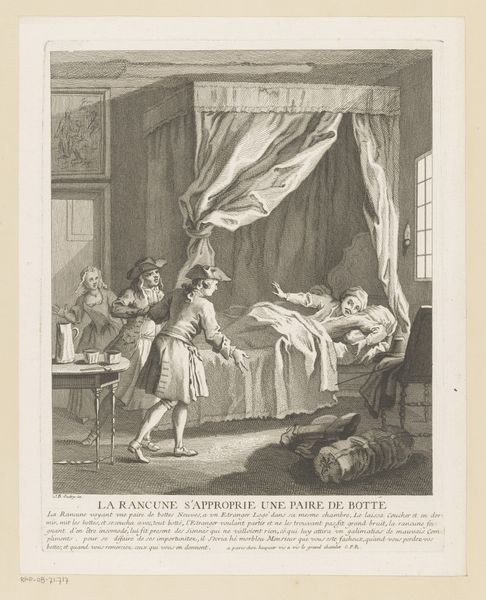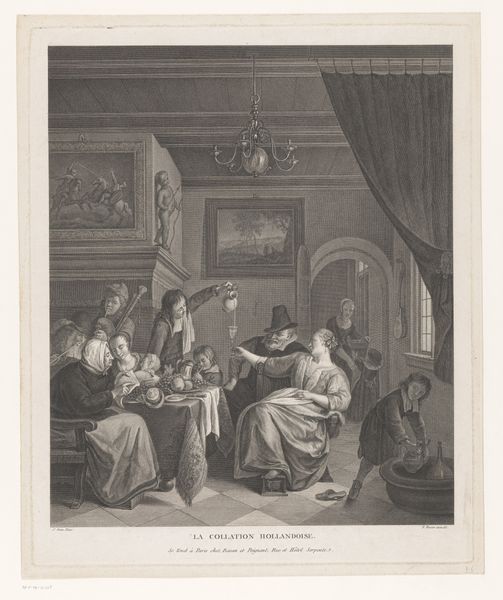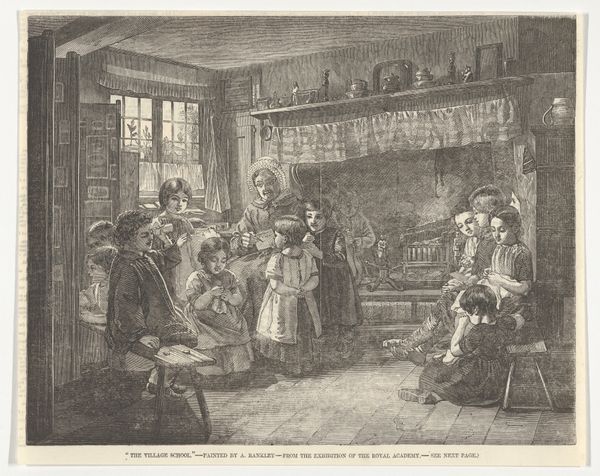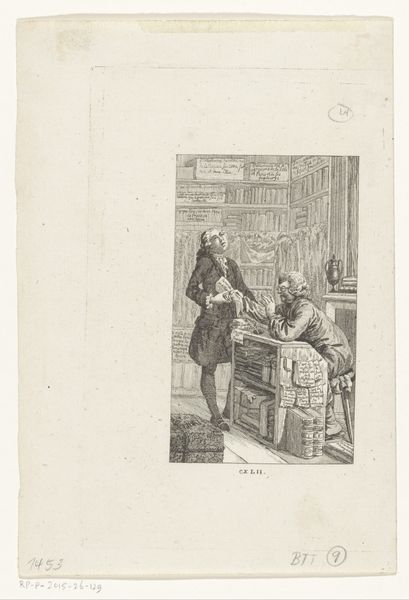
print, etching
#
narrative-art
#
baroque
# print
#
etching
#
genre-painting
Dimensions: height 367 mm, width 292 mm
Copyright: Rijks Museum: Open Domain
Curator: Ragotin at the Surgeon's, an etching dating from between 1705 and 1772 and attributed to Gabriel Huquier, depicts a rather chaotic scene. Editor: It feels very theatrical to me, like a scene from a play. What stories do you think it's trying to tell? Curator: Consider the objects displayed—animal skeletons, preserved creatures. What anxieties or fascinations about the body, about life and death, might these symbols represent for viewers of that era? These symbols link to anxieties about human frailty but also celebrate newfound anatomical understanding. Editor: It seems almost…mocking. Is the artist commenting on medical practices of the time? Curator: Perhaps, but it is difficult to assert definitively. Look at the posture of the man receiving treatment; how does it strike you? Consider, also, the surgeon's theatrical gesture; does this seem serious, satirical, or something in between? Editor: It could be both! A genuine attempt at healing, presented with a healthy dose of skepticism and humor. Are these types of scenes popular back then? Curator: Absolutely. Genre scenes provided commentary on society through a blend of realism and humor. But the underlying fascination with bodily function and health is more enduring. It reveals much about human priorities across history. Editor: I hadn’t thought about it that way. It's not just a snapshot of a specific time but a window into universal human concerns. Curator: Precisely! By engaging with symbols of health, or illness we reflect our hopes and fears in the narrative and symbolic choices of the artists.
Comments
No comments
Be the first to comment and join the conversation on the ultimate creative platform.

